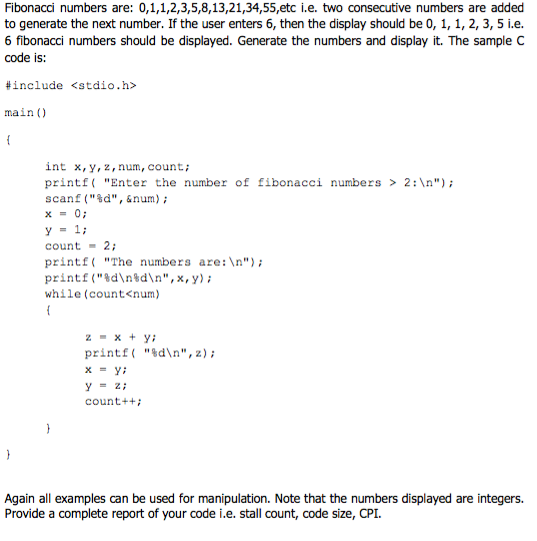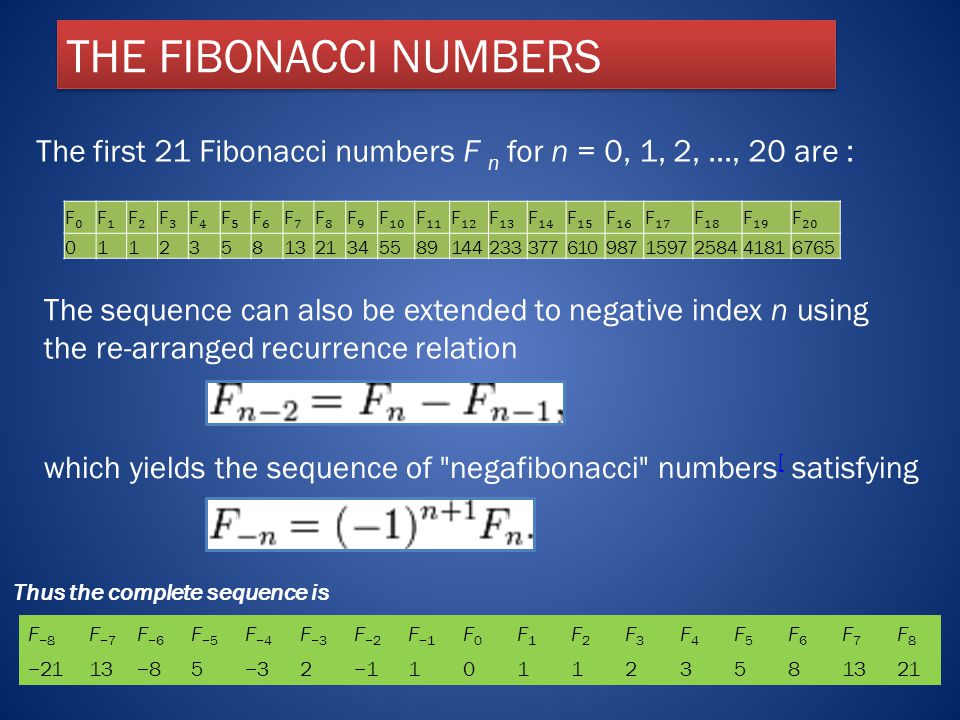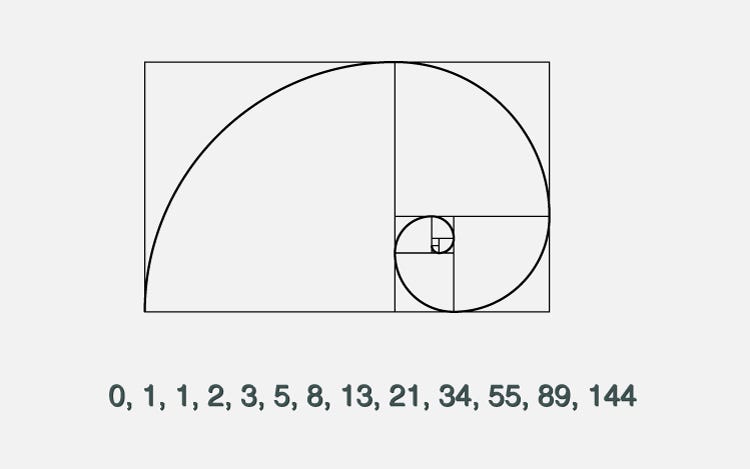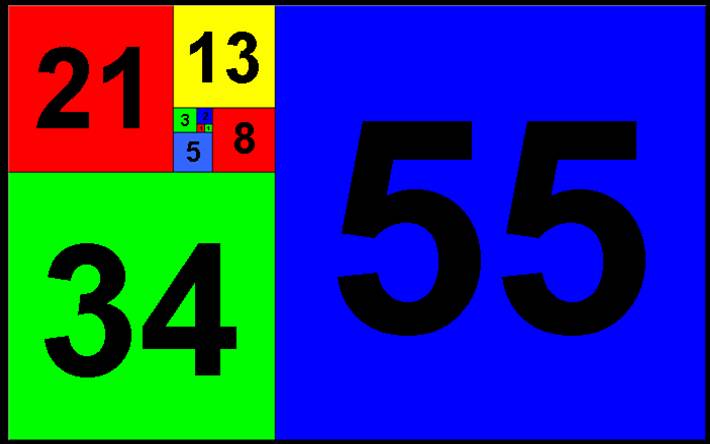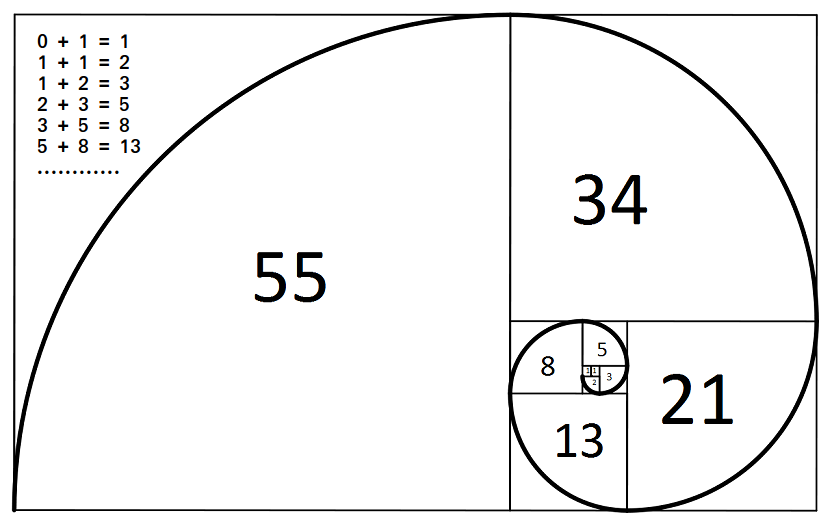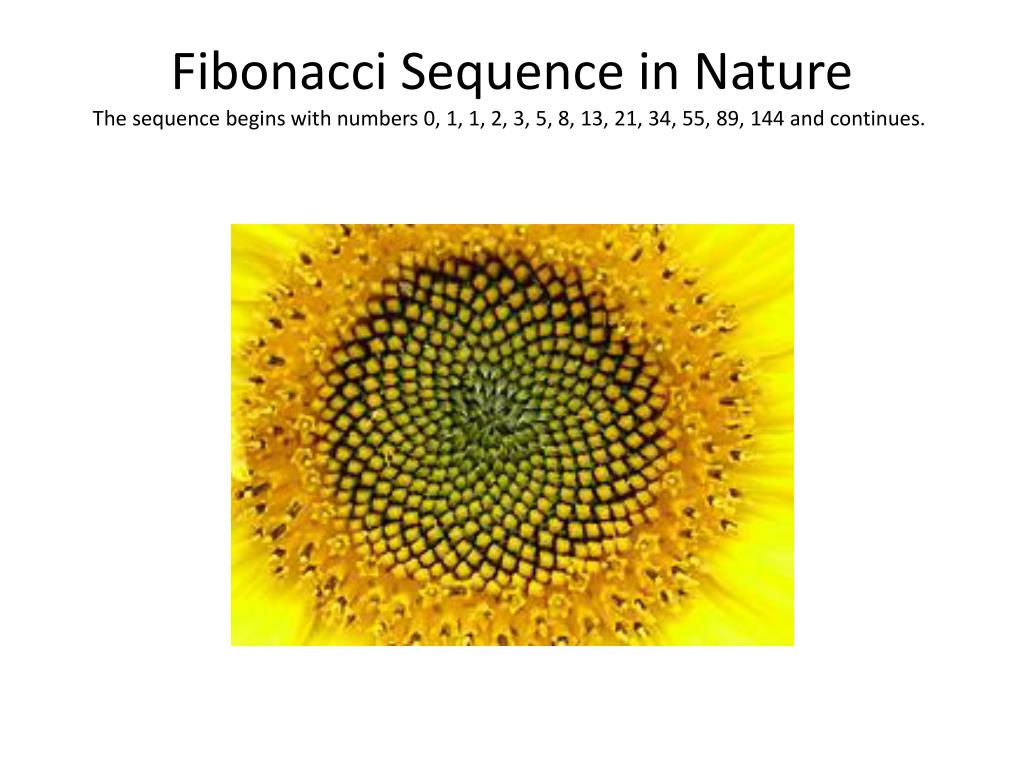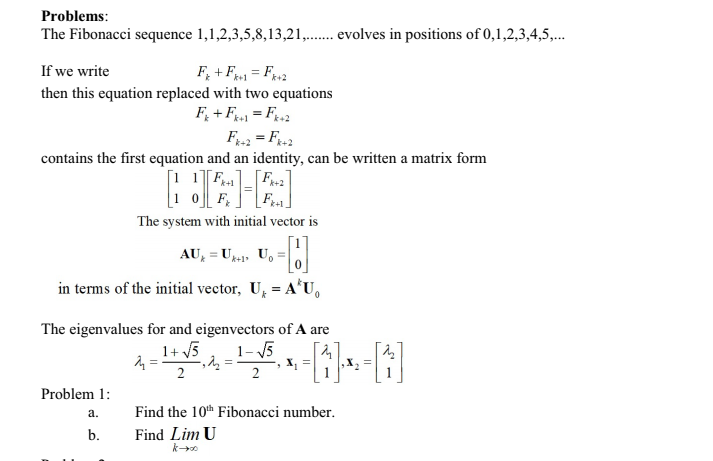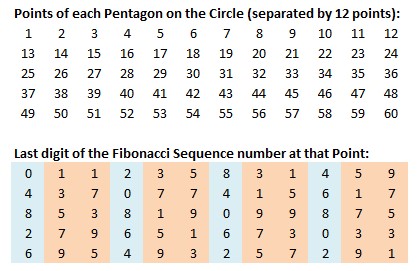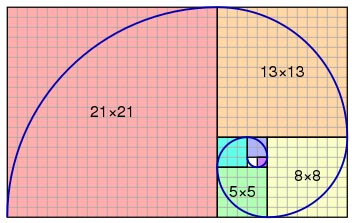0 1 1 2 3 5 Fibonacci Sequence
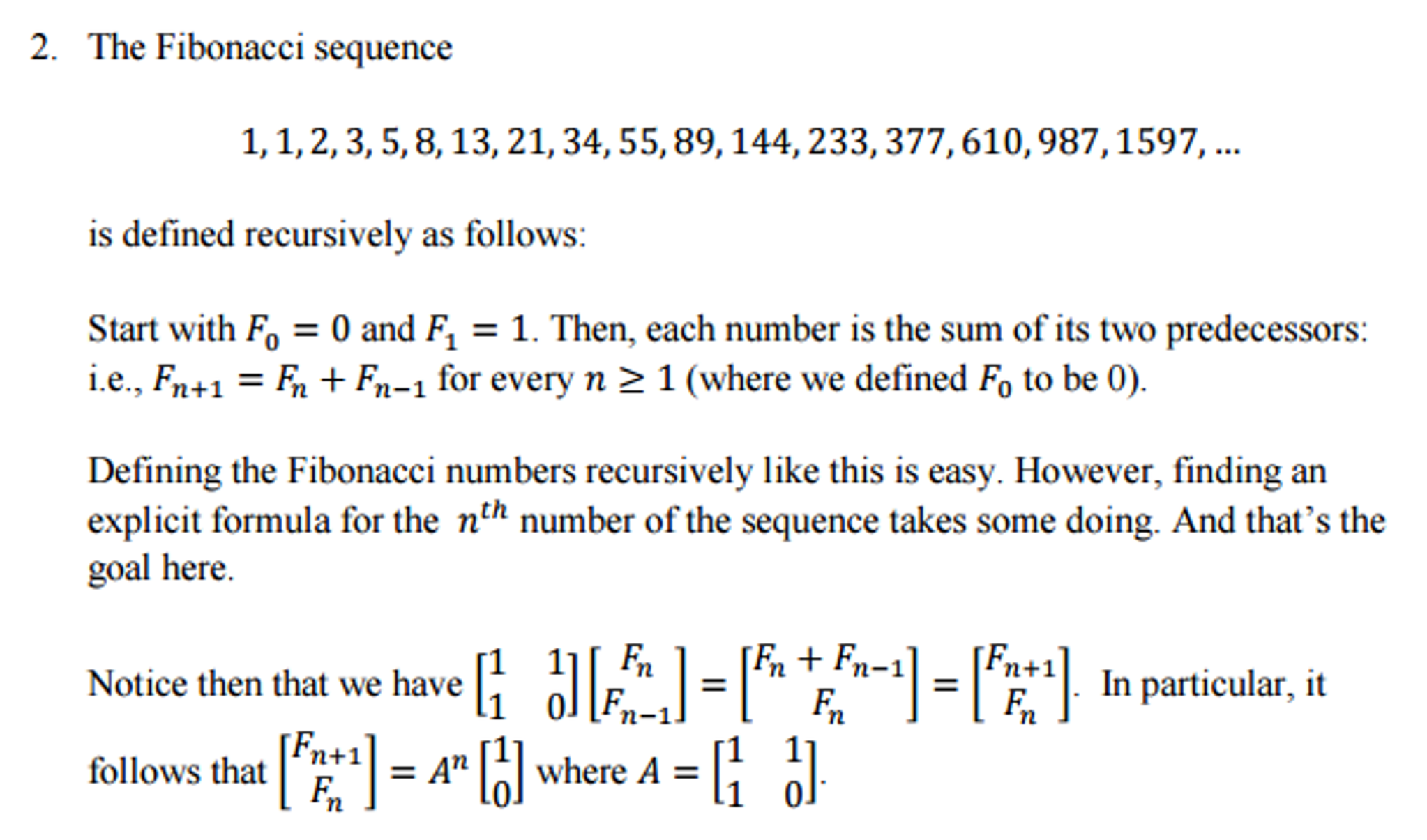
The fibonacci sequence is a sequence where the next term is the sum of the previous two terms.
0 1 1 2 3 5 fibonacci sequence. Although fibonacci only gave the sequence he obviously knew that the nth number of his sequence was the sum of the two previous. So here a 0 b 1 now for the 3rd element we add previous 2 elements a and b we get 0 1 1 so t. Fibonacci sequence is a sequence of numbers where each number is the sum of the 2 previous numbers except the first two numbers that are 0 and 1. 0 1 1 2 3 5 8 13 21.
F 0 0 f 1 1 f n f n 1 f n 2 n 1. Lucas numbers have l 1 1 l 2 3 and l n l n 1 l n 2. F 0 0. Letting a number be a linear function other than the sum of the 2 preceding numbers.
The problem yields the fibonacci sequence. The fibonacci sequence is the series of numbers. It s the fibonacci series. The next number is found by adding up the two numbers before it.
Primefree sequences use the fibonacci recursion with other starting points to generate sequences in which all numbers are composite. The recurrence formula for these numbers is. The pell numbers have p n 2p n 1 p n 2. F 1 1.
A fibonacci sequence is written as. The first two terms of the fibonacci sequence are 0 followed by 1. 1 1 2 3 5 8 13 21 34 55 89 144 233 377. 0 and 1 respectively and the next term will be the summation of previous 2 elements.
0 1 1 2 3 5 8 13 21 34. Fibonacci omitted the first term 1 in liber abaci.




